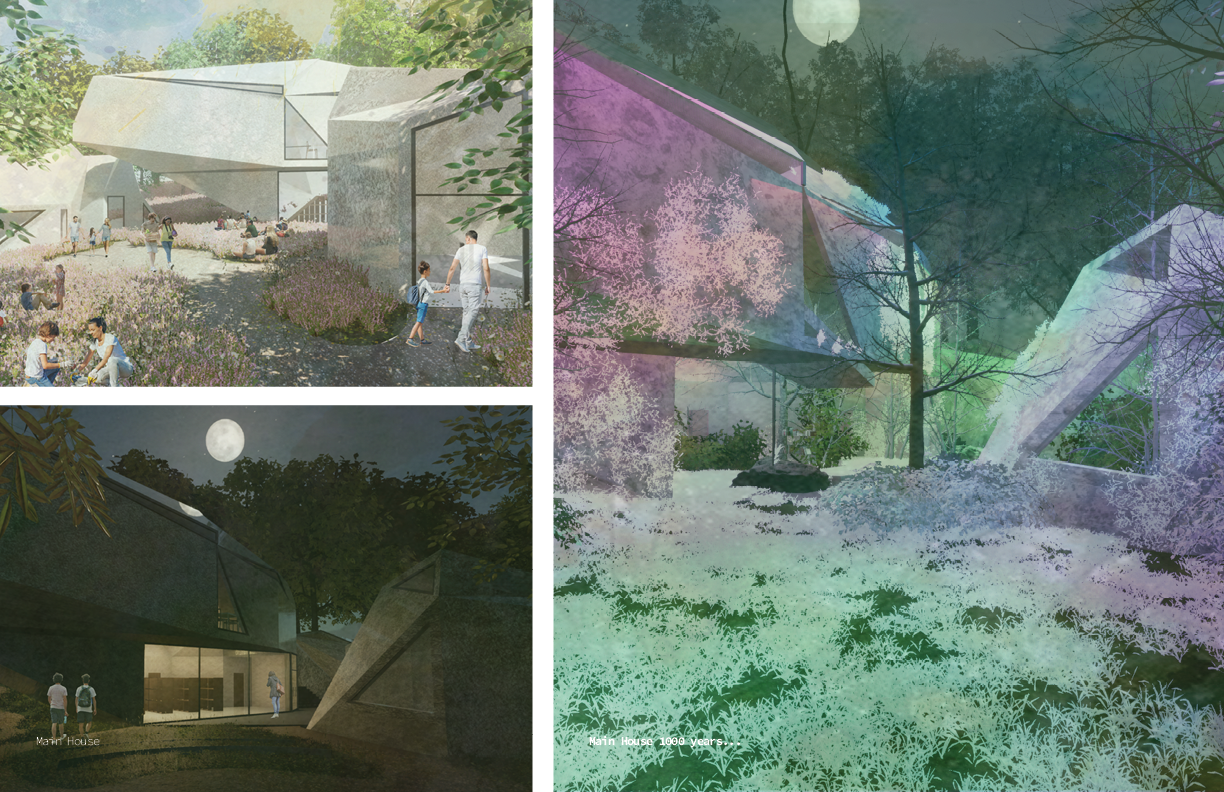Beneath our feet asks us to think about the geological and fungal histories and networks that lay below ground, visible on the surface only when we’re willing to give time and energy to understanding the delicate systems and geologies below. Training our senses to see, smell, and feel the energies that live beneath us.
A
AIA CES Credits
AV Office
321M Fayerweather Hall
Abstract Publication
415 Avery Hall
Academic Affairs
400 Avery Hall
Academic Calendar, Columbia University
Academic Calendar, GSAPP
Admissions Office
407 Avery Hall
1172 Amsterdam Avenue
New York, New York 10027
Advanced Standing Waiver Form
Must be printed and returned to 400 Avery Hall
Alumni Board
Alumni Office
405 Avery Hall
1172 Amsterdam Avenue
New York, New York 10027
Architecture Studio Lottery
Assistantships
Avery Library
300 Avery Hall
1172 Amsterdam Avenue
New York, NY 10027
Avery Review
Avery Shorts
B
Black Student Alliance at Columbia GSAPP
Building Science & Technology Waivers
Bulletin Archive
C
Career Services
300M Avery Hall
Columbia Books on Architecture and the City
Commencement
Communications Office
415 Avery Hall
Conversations podcast
Counseling and Psychological Services
Courses
Credentials Verification
Credit Transfer
Cross Registration
D
Dean’s Letter
Dean’s Office
402 Avery Hall
1172 Amsterdam Avenue
New York, NY 10027
Development Office
404 Avery Hall
Directory of Classes (All Columbia University)
Disability Services
Dodge Fitness Center
3030 Broadway Dodge
Dual Degree Program Requirements
E
End of Year Show
Events Office
415 Avery Hall
External Funding Sources
F
Faculty Directory
Feedback
Finance Office
406 Avery Hall
Fitch Colloquium
Future Anterior Journal
G
GSAPP Community Fellowship Program
GSAPP Emergency Fund
GSAPPX+
Grades
Graduation
Graphics Project
H
Honor System
Human Resources
Hybrid Pedagogy Resources
I
IT Helpdesk Ticket, GSAPP
IT Office, GSAPP
IT, Columbia University (CUIT)
Identity
Incubator Prize
International Students and Scholars Office (ISSO)
N
News and Press Releases
Newsletter Sign Up
Non-Discrimination Statement and Policy
O
Onera Prize for Historic Preservation
Online Admissions Application
GSAPP Admissions 407 Avery Hall
Output Shop
116 Avery Hall
1172 Amsterdam Avenue
New York, NY 10027
Ownership of Student Work Policy
P
Paris Prize, Buell Center
Paul S. Byard Memorial Lecture Series
Percival & Naomi Goodman Fellowship
Plagiarism Policy
Policies & Resources
Press Releases
Publications Office
415 Avery Hall
1172 Amsterdam Avenue
New York, New York 10027
R
Registration
Registration: Add / Drop Form
Room Reservations
S
STEM Designation
Satisfactory Academic Progress
Scholarships
Skill Trails
Student Affairs
400 Avery Hall
Student Awards
Student Conduct
Student Council (All Programs)
Student Financial Services
Student Health Services at Columbia
Student Organization Handbook
Student Organizations
Student Services Center
205 Kent Hall
Student Services Online (SSOL)
Student Work Online
Studio Culture Policy
Studio Procedures
Summer Workshops
Support GSAPP
beneath our feet
During our site exploration, we became aware of severe natural elements critical to the site and its connection to the land, mycelium, fungi, and milky quarts in particular. Beneath trees exist an underground network of mycelium. Mycelium fibers are a type of fungi that creates an intricate network of interconnectedness in the soil. As a result of this beautiful network and the appearance of several mushroom types on site, mycelium plays an important role in both our design and construction. Easily produce-able and strong insulator mycelium bricks will create the walls of several temporary pavilions at the gateway and provide insulation in our main house and passive guest houses throughout the site.
The abundance of quartz, its spiritual connection to this land, and embedded indigenous knowledge have led us to typology studies for our Main House and Passive House. As quartz is an energy stone, we wanted to use the materiality of this gem to create a welcoming architectural language. We also explored fungi with bioluminescent qualities which we intend to isolate and use as lighting throughout the site on our elevated walkways or throughout suspended hammocks on site.
We imagine a 1000-year-future where the unseen mycelium networks surface above ground, adjusting, evolving, and living in, on, and among our architecture. While the lack of human interaction in the sight may be seen as unsettling to some, we welcome intertwining architecture and nature. As we learn to respect what’s beneath our own feet, we learn to acknowledge the sacredness of land, mycelia, and to think about what it means to give architecture to the fibers of the Earth.






